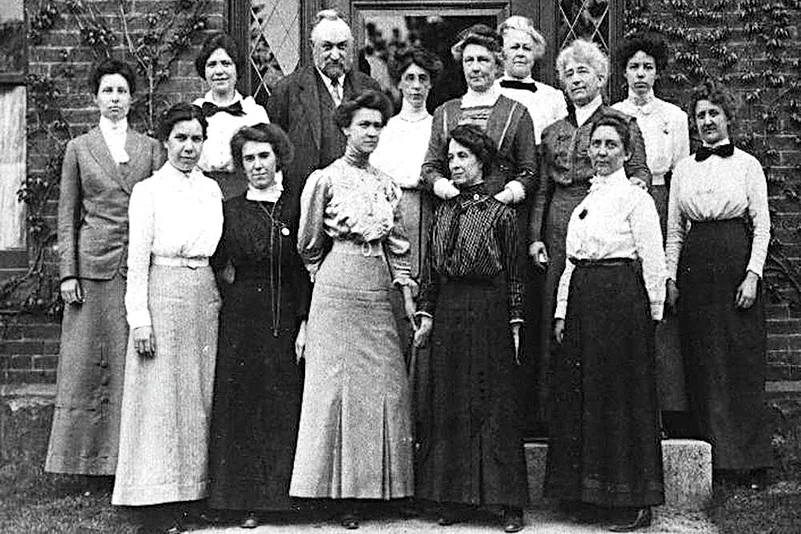The night sky with the multitude of stars has always fascinated humankind. All cultures have observed stars, speculated about them and formulated a cosmology. Hipparchus (190-120 BC), arguably the greatest astronomer of antiquity, made the first detailed observations of about a thousand stars and recorded not only their positions in the sky but also categorised them according to brightness. The system devised by Hipparchus was, with minor modifications, still in use till the late 19th century.
Things began to change in the 19th century when astronomers started using photography together with bigger and better telescopes to not just observe but also record the brightness and the spectrum of stars. This resulted in the Draper catalogue of Stellar Spectra in 1890, which was the culmination of years of intense, backbreaking and meticulous labours of a group of women ‘computers’. Dava Sobel’s book is about these remarkable, hitherto mostly unknown, women.
The story begins in the early 1880s at the Harvard College Observatory. Edward Pickering, its visionary director, managed to persuade a wealthy widow, Mrs. Draper, to serve as a benefactress. Mrs. Draper’s late husband was a keen astronomer and had taken hundreds of photographs of stars using a telescope he had set up in his estate. This extraordinary, detailed photographic record needed to be analysed. For this purpose were employed a team of women ‘computers’, whose job it was to measure and record the properties (brightness and spectrum) of the thousands of stars and categorise them.
The women were not trained astronomers and most had only high school education. One, Williamina Fleming, was in fact Pickering’s maid before she started work as a computer. Fleming was quick to learn and was soon made in-charge of the dozens of women computers. She established herself as the person responsible for analysing the photographic plates and determining the spectrum of the stars. Her contribution was so significant that she was the first woman to hold any title at Harvard—that of the ‘curator of Astronomical Photographs’. She subsequently became the first American woman to be made a fellow of the Royal Astronomical Society. It was the work of her team of dedicated women that resulted in the Draper catalogue.
The women computers at Harvard had a tough life—their work needed immense concentration and meticulous care and they worked long hours for poor pay. In fact, Fleming had complained several times to the director about the low pay she received compared to her male counterparts, but her requests were brushed aside.
The Draper catalogue was followed by the Harvard Classification system of stars, also based on the spectra of stars. Though the classification was useful for studying the stars, the essential question of how the observed spectrum related to the physical properties of the stars remained unanswered. It was only in the 1920s that Meghnad Saha derived the theory of ionisation, which allowed astronomers to relate a star’s spectrum to its temperature. His eponymous equation continues to be a mainstay of stellar astrophysics.
Dava Sobel’s book is a gripping portrait of these women computers as well as their seminal contribution to the development of astrophysics. As with her other books, Sobel is extremely adept at intermingling personal histories with the happenings on a larger canvas. However, occasionally, in this otherwise gripping and engaging narrative, tedious details can be somewhat trying—”Mrs. Fleming prepared fudge and dates stuffed with peanuts...creamed oysters with hot cocoa, cakes and sweets.”
Sobel masterfully weaves in the complexity of the subject (astrophysics) with human interest stories about her characters. Though her brief explanations of the scientific content are fairly lucid, the content itself is just about enough to follow the narrative.
Women in science have rarely got their due. The case of Rosalind Franklin, the English chemist whose work on the structure of DNA was never really recognised during her lifetime is well known. It is to Sobel’s credit that she has brought to the forefront the enormously important work done by these unknown women for the development of astrophysics. It might be tempting to think that things regarding women in science have changed drastically in the intervening decades. They have not—as late as 1974, Jocelyn Bell who, as a PhD student, discovered a particular kind of star called pulsar, was ignored by the Nobel committee, which awarded the prize for the discovery to her supervisor. To paraphrase a well-known sexist tagline from a sixties commercial, when it comes to science, “you have not come a long way baby”.
















